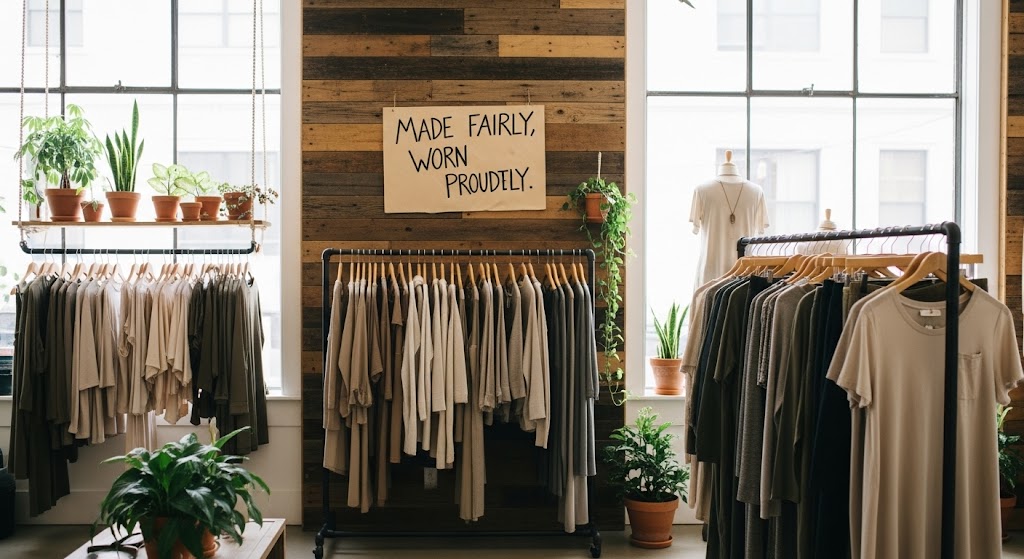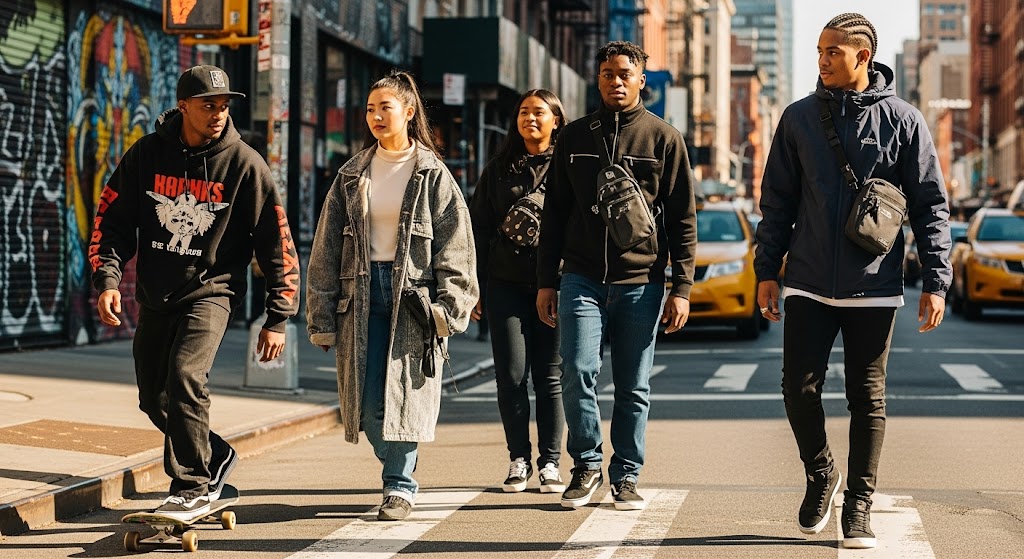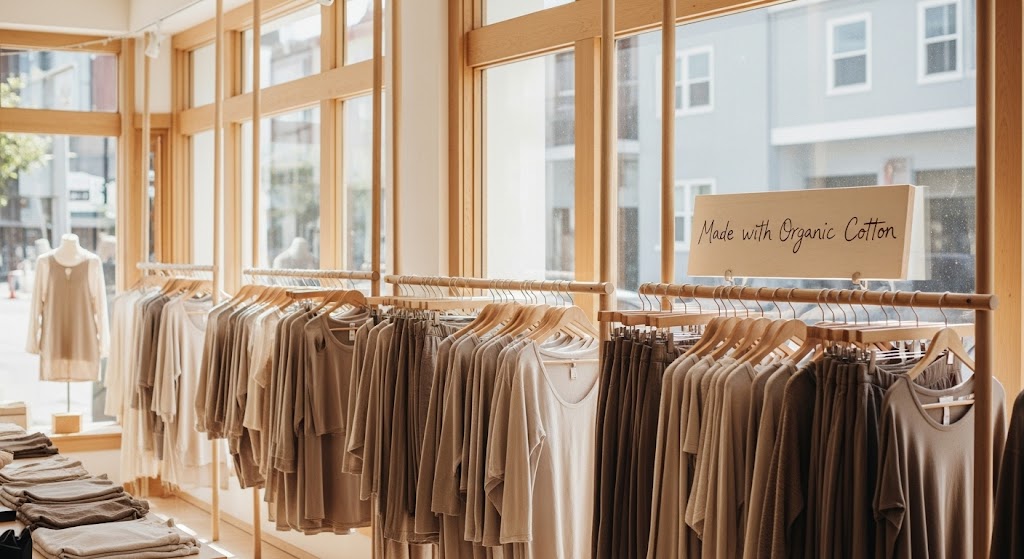No products in the cart.: $0.00
American Fashion Icons: From Old Hollywood to Gen Z

The American fashion identity has always been shaped by icons—those individuals whose style transcends trends and becomes cultural symbolism. From the silver screen sirens of the 1950s to TikTok fashion influencers of today, American fashion icons reflect the dreams, struggles, and transformations of the nation. Their clothing choices often go beyond fabric and form; they become visual language for movements, identities, and generational mindsets.
The Golden Age: Glamour and Rebellion (1950s–1960s)
Take James Dean, whose 1955 role in Rebel Without a Cause established the blueprint for “cool.” His signature look—white T-shirt, leather jacket, and cuffed blue jeans—wasn’t just rebellious; it redefined American masculinity. Dean embodied youthful angst, independence, and anti-establishment spirit. Even today, his influence is found in countless menswear collections.
Then there was Marilyn Monroe, the ultimate American bombshell. With her platinum curls, red lips, and curve-hugging dresses, Monroe defined a new kind of femininity—glamorous, powerful, and sensual. But beyond beauty, she challenged gender expectations by building her own production company and asserting control over her image, long before “personal branding” existed.
Elegance, Modesty, and The Rise of “Preppy” (1960s–1970s)
In the 1960s, Audrey Hepburn emerged as a beacon of refined style. Though British-born, Hepburn was adopted by American audiences and became an icon through roles like Breakfast at Tiffany’s. Her look—black turtlenecks, slim trousers, ballet flats—ushered in an era of minimalism and sophistication. Unlike Monroe, Hepburn represented simplicity and subtlety. Her collaboration with designer Hubert de Givenchy also demonstrated how American celebrities could shape global haute couture.
Steve McQueen, the “King of Cool,” mirrored Hepburn’s minimalism in a masculine form. Whether in khakis, leather jackets, or Persol sunglasses, McQueen’s rugged, unbothered style made him an icon in both fashion and film. He also brought utility and function into the conversation—prefiguring today’s techwear and utilitarian trends.
This era also birthed the preppy look, inspired by Ivy League students and Eastern seaboard elites. Brands like Ralph Lauren and Tommy Hilfiger took cues from collegiate uniforms—polo shirts, cardigans, boat shoes—and transformed them into mainstream Americana. Preppy style became aspirational, clean, and class-signaling.
The 1980s and 1990s: Bold, Loud, and Global
With the arrival of the 1980s, Madonna exploded onto the scene and redefined what it meant to be a fashion icon. She wasn’t just wearing fashion—she was performing it. From punk-inspired lace gloves and corsets to her controversial religious imagery, Madonna made fashion subversive. Each era of her career came with a new aesthetic, often influencing entire trends. She gave birth to the idea that style can be a tool of reinvention, particularly for women in pop culture.
At the same time, fashion models were becoming celebrities in their own right. Naomi Campbell, Cindy Crawford, and Kate Moss were more than just faces—they were brands. Their appearances in campaigns, music videos, and editorial shoots introduced runway style to the general public. In a way, they democratized fashion by making it visible outside of high fashion circles.
Kate Moss, in particular, embodied the “heroin chic” aesthetic of the late ’90s—thin silhouettes, messy hair, low-rise jeans, and slip dresses. Though controversial, Moss’s look signaled a move away from the sculpted glamour of the previous decades and into rawness and reality. Her style made way for grunge and anti-fashion movements in America, especially among urban youth.
The 2000s–2010s: Social Media and the Rise of Personal Style
The 2000s marked the beginning of celebrity-driven fashion. Kanye West brought streetwear to the luxury world with his Yeezy line, blending minimalist aesthetics with urban influences. His oversized silhouettes, muted color palettes, and sneaker designs set a precedent for collaborations between rappers and luxury brands.
Simultaneously, Rihanna emerged not only as a music and beauty mogul but as a fearless fashion trailblazer. Her Met Gala appearances—particularly her 2015 yellow Guo Pei gown—cemented her as a style visionary. Rihanna’s ability to toggle between couture and streetwear helped dismantle the old boundaries between “high” and “low” fashion. Through Fenty, she also made a case for fashion that is inclusive—racially, culturally, and in body type.
The 2010s also ushered in gender-fluid fashion, thanks to icons like Jaden Smith, who wore skirts to formal events and starred in Louis Vuitton womenswear campaigns. Smith challenged the rigid binaries of male fashion and encouraged a younger generation to wear what felt right, not what was “appropriate.”
Gen Z: Fashion as Identity and Statement (2020s–Present)
In the current decade, fashion icons are emerging from every corner of the internet. Zendaya leads the charge on red carpets, blending vintage references with futuristic cuts. One moment she’s wearing a structured suit from the 1990s Mugler archives; the next, a sculpted dress that looks like wearable art. Her stylist, Law Roach, has been instrumental in shaping a new generation’s understanding of fashion as storytelling.
Timothée Chalamet, too, has reinvented menswear norms. Whether wearing backless suits or sequined collars, he demonstrates that elegance and masculinity are not mutually exclusive. His vulnerability and softness, often conveyed through color and silhouette, have made him a modern icon for young men redefining identity.
And then there’s Billie Eilish, who rose to fame in oversized streetwear, rejecting the objectification of her body. As she matured, her fashion evolved too—incorporating corsetry, dresses, and couture in a way that reflected her personal growth rather than industry expectation. Billie’s refusal to conform, and her eventual embrace of duality (soft and hard, masculine and feminine), speaks directly to Gen Z’s complex relationship with identity.
What Makes an American Fashion Icon Today?
What defines an American fashion icon today isn’t just appearance—it’s message. They are not simply trendsetters, but changemakers. They’re activists, entrepreneurs, and storytellers. They use fashion as a medium to advocate for gender fluidity, racial equity, environmental justice, and self-expression.
Social platforms like TikTok and Instagram have democratized style. Influencers from small towns in Ohio or Bronx stylists can now have the same reach as a Vogue cover model. Style has become decentralized—and in America, that makes perfect sense. Fashion belongs to everyone, and anyone with a smartphone and sense of vision can become the next icon.
As we look forward, American fashion icons will likely become even more intersectional, interdisciplinary, and unfiltered. In a country of immigrants, protest, technology, and art, fashion remains a living, breathing record of who we are and where we’re going.


